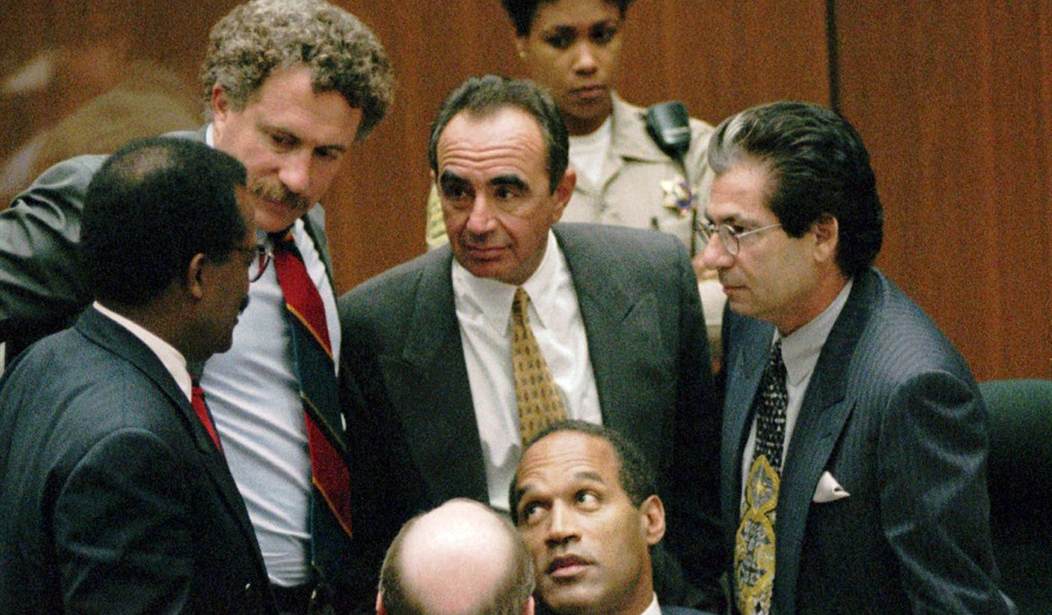Please, Lord, do not make this come to pass. I write this as a Los Angeles-based survivor of the coverage of the OJ Simpson trial, and the impact it clearly had on the trial, and beyond that how it contributed to the polarization of the broader audience.
We’ll get to the self-defeating argument from the New York Daily News in a moment, but first let’s go to Politico for the context. The state of New York remains opposed to televising trials in general, one of the last holdouts, and that includes the trials of once-and-future presidents. For now, anyway:
Trump’s case again highlights how New York has among the most restrictive laws in the nation banning cameras and broadcasts inside the courtroom in most proceedings, a law that dates back to the 1930s. The state Legislature has barely tinkered with it since then. Only Washington D.C. is more stringent on media coverage inside the court, according a report last year by the The Fund for Modern Courts, a nonpartisan nonprofit.
Some state lawmakers are making a renewed push to change the law amid Trump’s high-profile appearance Tuesday in Manhattan Criminal Court.
“As the media capital of the world — and the venue for the arraignment of Donald Trump — we must change this outdated law to allow the public to witness trials,” said Sen. Brad Hoylman-Sigal, a Manhattan Democrat who sponsors a bill to change the law.
To be fair, this effort began long before Donald Trump got indicted, or even became president. Activists have been trying to get cameras into New York courts for years as a means to provide more transparency on prosecutions and lawsuits. Those efforts will likely accelerate now, however, given the prospect of turning any trial of Trump into an even greater media circus than it will otherwise be.
Speaking of media circuses, let’s now look at the argument from the editorial board of the NY Daily News:
Long ago, New York feared that cameras would encourage grandstanding and banned them. Over time, as state after state has embraced transparency, it’s clear that the benefits, letting people see how cases are presented and proved or not, far outweigh the risks.
A coming trial, with unprecedented public interest, will be an O.J.-sized spectacle in which every interaction is run through the cable TV and Twitter hysteria mills. Cameras in court can be an antidote to such breathlessness. Both Trump boosters and Trump haters would see what actually unfolds: the banalities on which the case is built, how witnesses are examined and cross-examined, how holes are poked in the prosecution. As they do, they are less likely to embrace outlandish conspiracies and likelier to root their reactions in reality. This would be a public education as important as putting Senate hearings on C-SPAN.
Er … wut? Granted, it’s been nearly thirty years since the Simpson trial, but this is exactly the opposite of what transpired. Cameras in court did not provide an “antidote” to “breathlessness”; they amplified it. Far from exposing the “banalities” of a criminal prosecution, the live transmission of the trial and the endless commentary around it sensationalized the banal for an audience that largely didn’t know any better.
Even worse, the cameras incentivized everyone in court to play to the crowd. Perhaps the prosecution’s glove stunt would have taken place anyway, but it appeared at the time an attempt to tamp down some of the conspiracy theories that floated around the commentariat. Robert Ito lamented from the bench how his wife had gotten pulled into the case by the media, which was apparently approximate in concern to the two murdered victims in the case. Character attacks on witnesses and attorneys had an impact in and out of the courtroom. And every night, hours of ‘analysis’ would chew over the same sensationalized details.
All of this proved the wisdom of a favorite poem of mine, An Essay on Criticism by Alexander Pope, especially the first stanza:
A little learning is a dang’rous thing;
Drink deep, or taste not the Pierian spring:
There shallow draughts intoxicate the brain,
And drinking largely sobers us again.
This problem appears again and again in televised trials. Very few people can commit to watching every minute of a trial, and most only catch soundbites and short viral clips of testimony or argument. This “little learning” becomes a “dang’rous thing,” especially when it becomes clear that the talking-head analysts only watched portions of the trial, too. In theory, televising the trial should result in better understanding of a case, but in practice, it sensationalizes the mundane and marginalizes the important, and incentivizes all the hot takes over cool-headed and informed analysis.
Any Trump trial would be a sensationalized mess even without the cameras. Add in live streaming of the trial, with both sides already posturing for the media, and it will become a screaming circus that will crowd out everything else in the news.
Of course, one would have to get into court first, and that’s no sure bet. Trump’s legal team will fight to have these charges thrown out of court on more than one issue, especially on statutes of limitation and jurisdiction. My own guess is that this won’t proceed to trial at all and this question will be moot. But if it does, the O.J. Simpson trial should be a warning rather than a precedent.







Join the conversation as a VIP Member